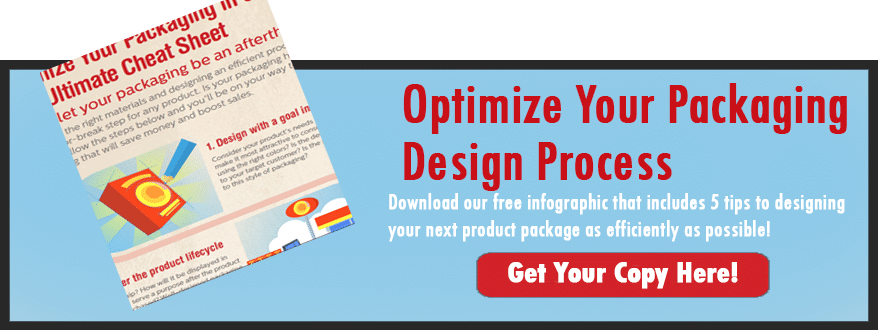Which Packaging Supplies Are Right For Your Products?
OK. You have a hot new product, and you can't wait to get it to market. You know that consumers will be super excited to get their hands on this item, and you know it will be a hot seller. You have a warehouse full of new products. And, you are ready to get these bad boys into the hands of a very willing public.
But. You have a problem.
You are not sure what type of packaging you should use for your products. Maybe you are an established company that has been down this road before. But, this product has special requirements your other items did not.
Then again, perhaps you are a start-up. You are totally new to this and have never packaged a single product in your life.
Either way, you have many burning questions in your mind about packaging. But, there is one question more important to you at the moment. That question is, which packaging supplies are right for my products?
To be fair, that is an excellent question regardless of where you are at in your business history. Thankfully, you are about to get the help you are looking for.
With over sixty-five years in packaging, Industrial Packaging has the information you need. This info will help you make an educated buying decision. Plus, you will be able to buy exactly the correct type of packaging for your products.
In the article below, we will explore the different types of packaging supplies. And, we will help you to answer some questions. The answers to those questions will quantify which packaging supply is proper for you.
With this information, you will be able to package your products like a rockstar.
Why Its Important To Choose The Correct Packaging Supplies
When it comes to choosing the correct packaging materials, there is a lot to consider. It's not as easy as just picking a material and running with it. Some materials simply won't work for certain types of products.
If you use the wrong kind of material for a product in error, it may lead to significant problems. Problems such as broken machinery, wasted materials, wasted time, wasted money, and in some cases, safety problems that can lead to injury.
Do you want to get to the part where you get to start seriously thinking about choosing a packaging supply? First, you will need to identify which category of packaging materials are right for you. Then, after that, we can move on to finding the best material for your products.
Comparing Rigid Packaging And Flexible Packaging
There are two main types of packaging supplies currently available. There are rigid packaging materials and flexible packaging materials. We can identify which kind of packaging materials are right for you. But, we will first have to take a look at each of these categories and explain the difference between them.
What Is Rigid Packaging?
Rigid packaging is most commonly defined as packaging materials that cannot be bent or forced out of their current shape. In other words, rigid packaging is the opposite of flexible packaging.
Rigid packaging provides a solid structure. It features a robust support mechanism for the products contained within. Rigid packaging is known for its superior strength. And, it is known to help prevent product damage and breakage (with some exceptions for glass containers).
Some examples of rigid packaging include corrugated boxes, glass jars, hard plastic bottles, and aluminum cans.
What Is Flexible Packaging?
Flexible packaging is any type of packaging material or package whose form can be easily changed. Flexible packaging is often bendable or malleable, especially when compared to rigid packaging materials. Some examples of flexible packaging include flexible pouches, shrink film, stretch film, clamshells, blister packs, skin packs, poly bags, and roll bags.
Flexible packaging is known for being lightweight and less costly to ship. Flexible packaging also uses much less material than rigid packaging, making it a much more environmentally friendly packaging choice with a significantly lower carbon footprint than materials like glass, cardboard, paper, and metal.
The popularity of flexible packaging has skyrocketed in the past decade and continues to gain market share due to lower cost and a smaller environmental impact than rigid alternatives.
Need Help Designing Your Packaging?
Rigid Packaging VS. Flexible Packaging: Which Is Right For You?
Now, you may be tempted to just choose one or the other type of packaging mentioned above for reasons of your own. But, to make the right decision regarding which kind of packaging is right for your products, you need to answer a few questions first.
- Do you require packaging that will prevent breakage? - If you said yes, rigid packaging would be a better choice for you.
- Do you want environmentally friendly packaging? - If you said yes, then flexible packaging is what you are looking for.
- Are you looking to avoid plastic packaging? - If you answered yes, then you will want to look into non-plastic based rigid packaging supplies (glass, metal,).
- Are you looking to cut costs in packaging? - If the answer is yes, flexible packaging would be the better choice for you.
- Are you looking to save money on shipping? - If you said yes, then flexible packaging is your best choice.
Answering these few simple questions above will give your everything you need to figure out if flexible packaging or rigid packaging is the best option for your business. Once you have identified which category of packaging supplies are right for you, you can begin exploring the different types of materials in that category.
What Are The Different Types Of Flexible Packaging Supplies?
There is an entire galaxy of flexible packaging supplies currently available today. Suppose you have identified flexible packaging supplies as the correct category of packaging materials for your business. In that case, your next step is to narrow it down to find which type of flexible packaging material is right for your products.
In the section below, we will look at some of the most common flexible packaging supplies. And, while this list is by no means extensive, it will give you a good foundational understanding of the types of materials we are discussing when we talk about "flexible packaging."
As for choosing which types of flexible packaging supplies are right for your products, you will want to explore which ever options resonate with your packaging needs a bit further.
By clicking on the links in the section below, you will be taken to an article about that kind of packaging supply. These articles will provide significantly more in-depth information about each type of material. With the information in those articles, you will be able to decide if that material is suitable for your products.
- Shrink Film - This widespread flexible plastic film is used on countless packaging lines the world over. You’ve probably seen shrink film being used for packaging products such as DVDs, board games, books, produce, and many other consumer products.
- Flexible Pouches - Ever buy a bag of coffee? How about a pouch of granola? Regardless of the product, chances are, you have purchased a product packaged in a flexible pouch. Flexible pouches are made from plastic and foils and are used for packaging snacks, drinks, and industrial powders and fluids.
- Blister Packs - You may be familiar with blister packs if you have ever bought batteries or fishing lures. Both of these common everyday items utilize this type of packaging. Blister packs feature a plastic "blister," which loosely holds the product against a piece of blister board.
- Clamshells - While they are not found at the beach, plastic clamshell containers actually kind of look and work like their namesake. Clamshells are made from two identical plastic shells that are connected on one side while the other is free to open and close. Typical clamshell applications include packaging for grab-n-go sandwiches, salads, and side dishes.
- Strapping - This material is made from various plastic and metal formulations and looks a bit like string or rope. It comes wound onto a plastic or cardboard core. Strapping is used to tightly bind products for unitization and transport. For example, large copiers and printers are often boxed and then strapped to their pallets to keep them secure during shipping.
What Are The Different Types Of Rigid Packaging Supplies?
Just like flexible packaging, rigid packaging comes in many different shapes and sizes. From glass to metal, there are a ton of different applications and uses for rigid packaging materials. Below, we will explore a few different types of rigid packaging materials and compare them to the flexible packaging supplies listed above.
By following the links below, you will be taken to additional information about each material. With the information provided, you will be able to decide if that material is right for your packaging needs.
- Glass Jars - If you have ever bought pickles, then you are familiar with glass jars. Glass jars, which generally feature a metal lid, are used for packaging various types of food products and can be found at your local supermarket. Glass jars are commonly used for packaging different types of marinated vegetables.
- Cardboard Boxes - Time tested and consumer approved, cardboard boxes are a staple of the most popular packaging materials. Cardboard boxes are made from corrugated cardboard and are usually sealed with packaging tape or other adhesives. Cardboard boxes are used for packaging many products such as food, clothing, electronics, and other consumer goods.
- Aluminum Cans - Whether you prefer soda, beer, or seltzer, you have likely purchased a beverage packaged in aluminum cans at some point in time. Aluminum cans are cylindrical food-grade aluminum containers most commonly used to package liquids like those mentioned above.
- Plastic Bottles - What's better than an ice-cold spring water after a long summer's day? Regardless of brand, if you have ever bought bottled water, then you have also purchased a plastic bottle. Plastic bottles are made from hard plastic and come in a variety of shapes and sizes. They are most commonly used for packaging water, beverages, and other liquids.
- Paperboard Boxes - What is your favorite brand of cereal? Whatever it is, you have probably read the back of the box while munching on your chosen breakfast. Paperboard boxes are thinner than their cardboard cousins. They are made from paperboard and used to package many different types of food, including crackers, candy, sugar, flour, and other similar products.
You Have Chosen Between Rigid And Flexible Packaging, Now What?
At this point, you should have a solid understanding of the differences between rigid and flexible packaging. With all of the information above, you should know if flexible or rigid packaging supplies are the correct types of materials for your products.
If you have concluded that flexible packaging is right for your business, you will want to read this follow-up article, Flexible Packaging Materials Buying Guide. After you have read this article, you should be able to identify the flexible packaging supplies that are right for your products.
If, on the other hand, you have decided that rigid packaging is the best choice for your business, Industrial Packaging is not the packaging supplier for you. In that case, you will want to look elsewhere for these items.
About Nathan Dube
As the Digital Marketing Specialist at Industrial Packaging, I am honored to create content for such a phenomenal company and work with one of the greatest teams in the Packaging Industry. Whether creating a video, writing blog posts or generating other pieces of content and multimedia, I am always excited to help educate and inspire our prospects and clients to reach their highest potential in regards to their packaging processes and needs.




